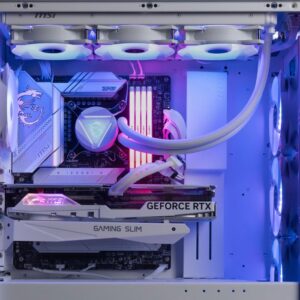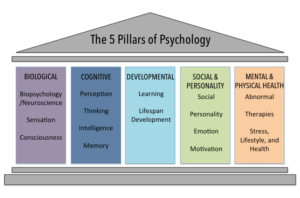
AI-powered gadgets are reshaping the way we interact with technology, integrating intelligence and automation into our daily lives. These devices enhance functionality and convenience, making tasks easier and more efficient.
From smart home devices that adjust lighting and temperature based on our preferences to health trackers that monitor our wellness, the applications of AI in gadgets are vast and varied. This evolving technology not only improves user experience but also represents a significant leap towards a more automated and connected future.
AI-Powered Gadgets Overview

AI-powered gadgets represent a significant advancement in technology, blending artificial intelligence with everyday devices to enhance user experience and functionality. These gadgets leverage machine learning and data analytics to provide smarter, more efficient solutions that adapt to individual preferences and habits. The increasing integration of AI into various devices has transformed the way we interact with technology, making it more intuitive and responsive to our needs.The market today offers a diverse range of AI-powered gadgets, each designed to solve specific problems or improve daily tasks.
These devices vary from smart home assistants to health-tracking wearables, showcasing the versatility and extensive applications of AI technology. The incorporation of AI not only boosts performance but also introduces features that streamline operations, providing users with personalized experiences.
Types of AI-Powered Gadgets
Numerous AI-powered gadgets are currently available, each serving a unique purpose. Understanding the types of devices can help consumers make informed choices about which products best fit their lifestyles. Here are some prominent categories:
- Smart Speakers: Devices like Amazon Echo and Google Nest allow users to control smart home features, play music, and access information through voice commands. They use natural language processing to understand and respond to user inquiries.
- Wearable Health Devices: Gadgets such as Fitbit and Apple Watch monitor health metrics, including heart rate and activity levels. These devices leverage AI to analyze data trends and provide insights for better health management.
- Smart Home Security Systems: Products like Ring and Arlo utilize AI for security monitoring, recognizing faces and detecting unusual activities. They send alerts and allow users to view live feeds remotely, enhancing home safety.
- AI-Enhanced Cameras: Cameras from brands like Google and Canon employ AI for better image processing, including facial recognition and scene optimization, resulting in higher-quality photos and smart editing features.
- Smart Appliances: Devices like smart refrigerators and ovens use AI to optimize energy usage and improve cooking efficiency. They can suggest recipes based on available ingredients and adjust settings automatically.
AI integration significantly enhances the functionality of common gadgets by enabling them to learn from user behavior and preferences. For instance, smart thermostats learn a household’s temperature preferences over time and adjust heating or cooling accordingly, leading to energy savings and increased comfort. Similarly, AI-powered language translation devices can facilitate communication across different languages, making travel and global business more accessible.
The integration of AI allows gadgets to become not just reactive, but proactive, anticipating user needs and providing tailored solutions.
Applications of AI-Powered Gadgets
AI-powered gadgets are transforming various aspects of daily life, enhancing efficiency, convenience, and overall quality of living. Their applications span across several fields, notably in home automation, healthcare, and education. This overview will delve into how these smart devices are reshaping our environments and experiences.
Home Automation and Smart Living
AI-powered gadgets play a significant role in home automation, creating smarter living spaces that adapt to the needs of their inhabitants. These devices enhance energy efficiency, security, and comfort.
- Smart Thermostats: Devices like the Nest Learning Thermostat learn user preferences over time and adjust heating or cooling automatically, leading to energy savings and increased comfort.
- Smart Lighting: Systems such as Philips Hue allow users to control lighting remotely, set schedules, and change color temperatures based on the time of day, improving both ambiance and energy use.
- Smart Security Systems: Gadgets like Ring cameras use AI to recognize faces and detect motion, providing homeowners with alerts and video feeds directly to their smartphones.
- Voice Assistants: Devices such as Amazon Echo and Google Home streamline control over various gadgets, allowing for hands-free operation and integration of multiple smart devices.
Healthcare and Personal Fitness
AI gadgets are making significant inroads into healthcare and personal fitness, promoting better health outcomes and personalized wellness strategies. These devices empower users to monitor and manage their health proactively.
- Wearable Fitness Trackers: Gadgets like Fitbit monitor heart rate, steps taken, and sleep patterns, providing users with insights into their daily activities and health metrics.
- Health Monitoring Devices: Blood pressure monitors and glucose meters that utilize AI can analyze trends and alert users to potential health issues, fostering early intervention.
- Telehealth Solutions: AI-driven platforms enable remote consultations with healthcare professionals, making healthcare more accessible while also utilizing data analytics for improved treatment plans.
Education and Learning Experiences
AI-powered gadgets are revolutionizing education, creating personalized learning environments that cater to individual student needs and enhance the overall learning experience.
- Smart Learning Platforms: Tools like Khan Academy utilize AI to adapt coursework based on students’ progress, ensuring that learners can master subjects at their own pace.
- Interactive AI Tutors: Platforms such as Duolingo integrate AI to offer customized language learning experiences, adapting lessons based on a user’s performance and preferences.
- Augmented Reality (AR) and Virtual Reality (VR): Gadgets that facilitate AR and VR provide immersive learning experiences, allowing students to explore complex concepts in a more engaging manner.
AI-powered gadgets are not just tools; they are integral parts of our evolving lifestyles, enhancing functionality and enriching our experiences in everyday tasks.
Future Trends in AI-Powered Gadgets
The landscape of AI-powered gadgets is rapidly evolving, driven by advancements in technology and changing consumer demands. As we look ahead, several emerging technologies are poised to shape the next generation of these intelligent devices, enhancing their capabilities and user experiences. New innovations in AI, machine learning, and connectivity are expected to further integrate into everyday gadgets, making them smarter and more intuitive.
However, alongside these advancements, there are also significant challenges and ethical considerations that need to be addressed. Understanding these future trends will help consumers and developers alike navigate the complexities of this fast-paced technological environment.
Emerging Technologies Influencing AI Gadgets
Several key technologies are emerging that will significantly influence the development of AI-powered gadgets:
- 5G Connectivity: The rollout of 5G will enhance the speed and reliability of data transmission, enabling gadgets to process information in real-time. This will facilitate seamless interconnectivity among devices, ushering in smarter home ecosystems.
- Edge Computing: By processing data closer to where it is generated, edge computing reduces latency and bandwidth usage. This will allow AI gadgets to operate more efficiently, providing quicker responses and improving overall performance.
- Natural Language Processing (NLP): Advancements in NLP will enable gadgets to better understand and respond to human speech, making interactions more natural and user-friendly. This will revolutionize personal assistants and voice-activated devices.
Challenges and Ethical Considerations
As AI technology progresses, several challenges and ethical concerns arise that must be addressed to ensure the responsible development of AI-powered gadgets:
- Data Privacy: The collection and processing of personal data by AI gadgets raise significant privacy concerns. Consumers need assurance that their data will be handled securely and ethically.
- Bias in AI Algorithms: AI systems can unintentionally perpetuate biases present in their training data, leading to unfair outcomes. It is crucial to develop algorithms that are transparent and equitable.
- Sustainability: The environmental impact of producing and disposing of AI gadgets is a growing concern. Future innovations should focus on sustainability, including the use of recyclable materials and energy-efficient designs.
Comparison of Current AI-Powered Gadgets and Future Innovations
The following table highlights key comparisons between existing AI-powered gadgets and anticipated future developments, illustrating improvements in functionality and design:
| Current Gadgets | Future Innovations | Improvements |
|---|---|---|
| Smart speakers with basic voice recognition | Advanced smart speakers with contextual awareness | Enhanced interaction capabilities based on user behavior and preferences |
| Fitness trackers with limited analytics | AI-driven health wearables with predictive health insights | Proactive health management through real-time data analysis |
| Home security cameras with motion alerts | AI-enabled cameras with facial recognition and anomaly detection | Increased security through intelligent monitoring and threat assessment |
Conclusion

In summary, AI-powered gadgets are not just novelties but essential tools that enhance various aspects of our lives, from home automation to health management. As we look ahead, the continuous development of these gadgets promises to bring even greater innovations, making everyday tasks simpler and more intuitive.
Key Questions Answered
What are AI-powered gadgets?
AI-powered gadgets are devices that utilize artificial intelligence to perform tasks, enhance user interaction, and improve efficiency in various applications.
How do AI gadgets improve home automation?
They learn user preferences and habits, allowing them to automate functions like lighting, heating, and security systems for improved comfort and efficiency.
Can AI gadgets help with personal fitness?
Yes, they track fitness metrics and provide personalized recommendations, making it easier to achieve health and fitness goals.
Are there privacy concerns with AI gadgets?
Yes, concerns include data security and user privacy, emphasizing the importance of understanding how data is collected and used.
What is the future of AI-powered gadgets?
The future includes even more advanced features, greater integration across devices, and improvements in design and functionality, making them more intuitive and user-friendly.







